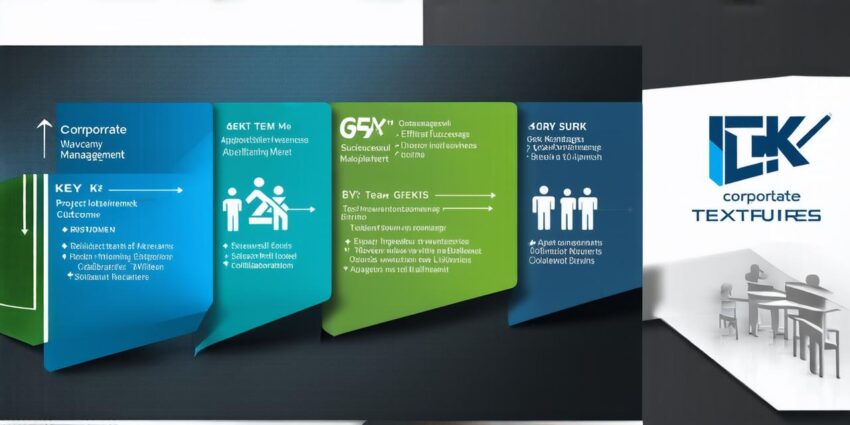The Dedicated Team Model: Unlocking the Advantages of High-Performing Teams in Project Management

Projects are becoming increasingly complex, requiring collaboration across multiple departments and disciplines. As a result, project managers need to build high-performing teams that can deliver results on time and within budget. One effective approach is the dedicated team model, which has been shown to improve communication, increase productivity, and reduce risks. In this article, we will explore the advantages of the dedicated team model in project management and provide practical tips for implementing it successfully.
What is the Dedicated Team Model?
The dedicated team model is a collaborative approach to project management that brings together cross-functional teams to work on specific projects. These teams are made up of members from different departments, such as marketing, sales, engineering, and design, who work together to deliver the project. The team has a fixed membership, with defined roles and responsibilities, and they stay together throughout the project lifecycle.
The key advantage of the dedicated team model is that it fosters collaboration and communication among team members, which leads to better outcomes. By working closely together, team members can share ideas, resolve issues quickly, and ensure that everyone is on the same page. Additionally, dedicated teams can be more productive than traditional cross-functional teams because they are focused solely on a specific project and have the necessary skills and expertise to deliver it successfully.
Case Studies: The Success of Dedicated Teams in Project Management
Many organizations have successfully implemented the dedicated team model in their project management processes, and the results speak for themselves. One such organization is Google, which has been using dedicated teams since its early days. According to Google co-founder Larry Page, “We have a very strong culture of collaboration and teamwork. We believe that the most important thing to do is to create an environment where people can work together effectively.”
Another example is Intel, which implemented the dedicated team model in 2005 as part of its new product development process. By using dedicated teams, Intel was able to reduce development time by up to 60%, improve quality, and increase customer satisfaction. According to Intel’s vice president of engineering operations, “We have seen a significant improvement in our ability to bring products to market faster and with higher quality.”
Research: The Science Behind the Dedicated Team Model
There is a growing body of research that supports the effectiveness of the dedicated team model in project management. One such study was conducted by Dr. J.D. Rossman, a professor at the University of California, Irvine, who found that “teams with a high degree of cohesion and collaboration tend to perform better than those with lower levels.”
Another study by Dr. Mark Kitsantas, an associate professor at Purdue University, found that dedicated teams had a higher level of performance than traditional cross-functional teams because they were “more focused on the project at hand” and had “better communication and collaboration.”
Practical Tips for Implementing the Dedicated Team Model
While the dedicated team model has many advantages, it can be challenging to implement effectively. Here are some practical tips to help you succeed:
-
Define Roles and Responsibilities Clearly
-
Build a Strong Team Culture
-
Assign Project Management Roles
-
Use Technology Effectively
-
Provide Training and Development Opportunities
-
Measure Performance Regularly
Summary: The Dedicated Team Model is the Key to Successful Project Management
The dedicated team model is a highly effective approach to project management that has been proven to improve communication, increase productivity, and reduce risks. By building high-performing teams that are focused on specific projects, organizations can deliver results on time and within budget.
To implement the dedicated team model successfully, it is essential to define roles and responsibilities clearly, build a strong team culture, assign project management roles effectively, use technology effectively, provide training and development opportunities, and measure performance regularly. With these tips in mind, you can unlock the full potential of your teams and achieve success in your projects.
FAQs
1. What is the difference between dedicated teams and traditional cross-functional teams?
Dedicated teams are made up of members from different departments who work together on specific projects, while traditional cross-functional teams consist of members from different departments working on multiple projects.
2. How can I measure the performance of my dedicated teams?
You can measure performance using key performance indicators such as time-to-market, cost, and quality. Use this data to identify areas for improvement and make adjustments as necessary.
3. What are some common challenges when implementing the dedicated team model?
Common challenges include defining roles and responsibilities clearly, building a strong team culture, and providing training and development opportunities effectively.
4. Can I use the dedicated team model for all types of projects?
While the dedicated team model can be effective for many types of projects, it may not be suitable for very small or very large projects. In these cases, other approaches such as traditional cross-functional teams or agile methodologies may be more appropriate.
